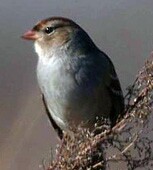
THURSDAY, Aug. 9 (HealthDay News) — North American birds that live in areas with dramatic seasonal swings from wet to dry sing more versatile songs than others, according to a new study.
This musical flexibility helps birds ensure their calls are heard no matter what conditions they face, said researchers from Australian National University in Canberra and the National Evolutionary Synthesis Center in Durham, N.C.
“They may sing certain notes really low or really high, or they may adjust the loudness or tempo,” the study’s co-author, Clinton Francis, of the National Evolutionary Synthesis Center, said in a center news release.
In conducting the study, the researchers analyzed the songs of more than 400 male birds. The recordings included 44 species, such as orioles, blackbirds, warblers, sparrows, cardinals, finches, chickadees and thrushes.
The recordings of whistles, warbles, cheeps, chirps, trills and twitters were converted into a sound graph using computer software. This enabled the researchers to see each song as a complex pattern of lines and measure its characteristics, such as its length, its highest and lowest notes, how many notes it included and how far apart the notes were.
In addition to the weather patterns, the researchers took geography into account. They found the birds that experience the most extreme differences in precipitation sing more complex songs, such as house finches and plumbeous vireos.
“Precipitation is closely related to how densely vegetated the habitat is,” co-author Iliana Medina, of Australian National University, said in the news release. “Birds that have more flexibility in their songs may be better able to cope with the different acoustic environments they experience throughout the year.”
Francis said sound transmits differently through different vegetation types. “Often when birds arrive at their breeding grounds in the spring, for example, there are hardly any leaves on the trees,” he said. “Over the course of just a couple of weeks, the sound transmission changes drastically as the leaves come in.”
The study authors noted environmental variation isn’t the only factor that comes into play. Species with noticeable color differences between male and female birds also sing more variable songs, they said.
The study was published online Aug. 1 in the journal Biology Letters.
More information
The U.S. National Wildlife Federation provides more information on bird songs and calls.

